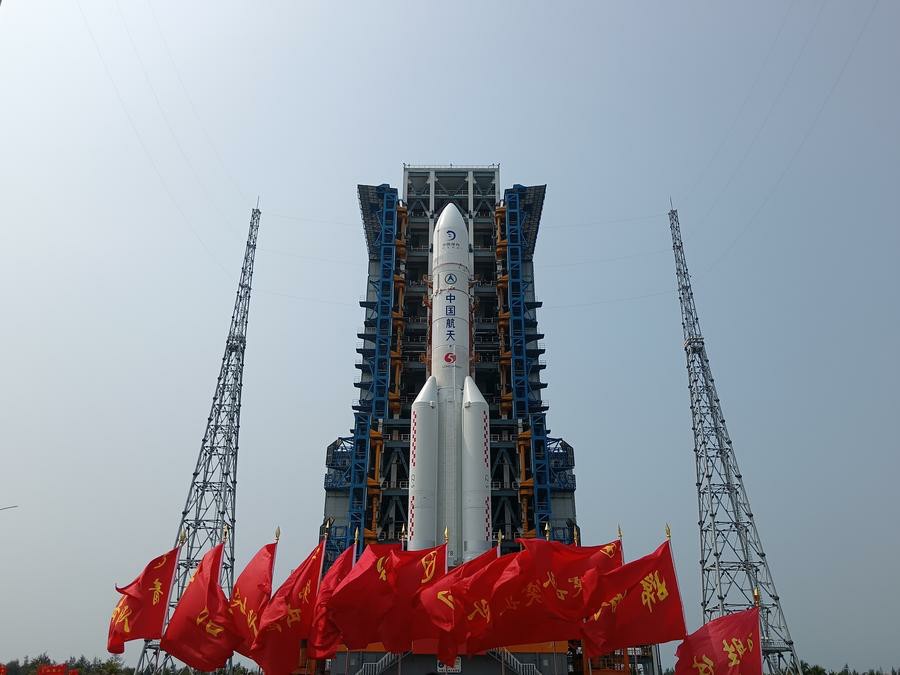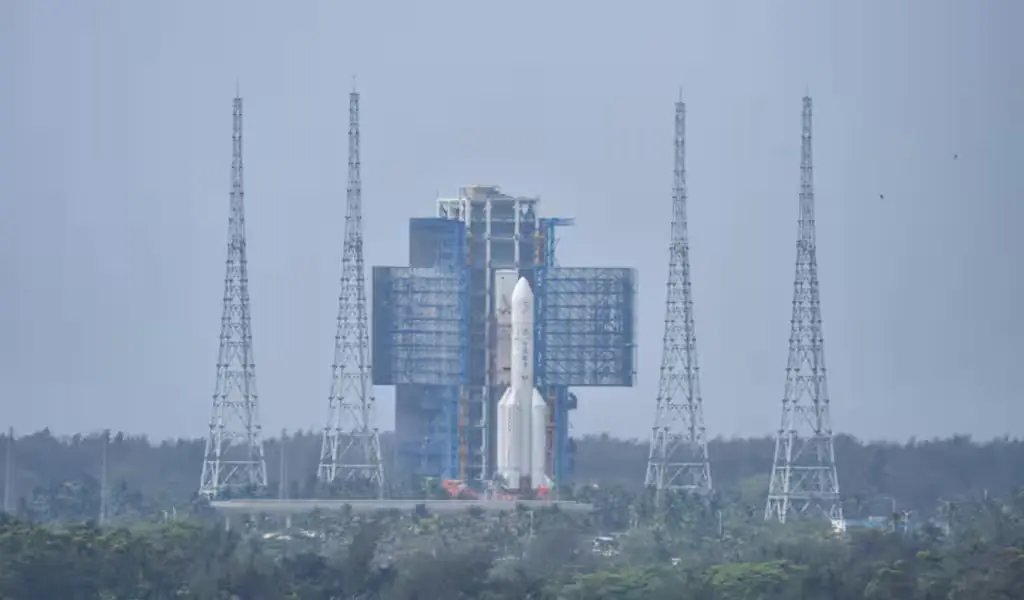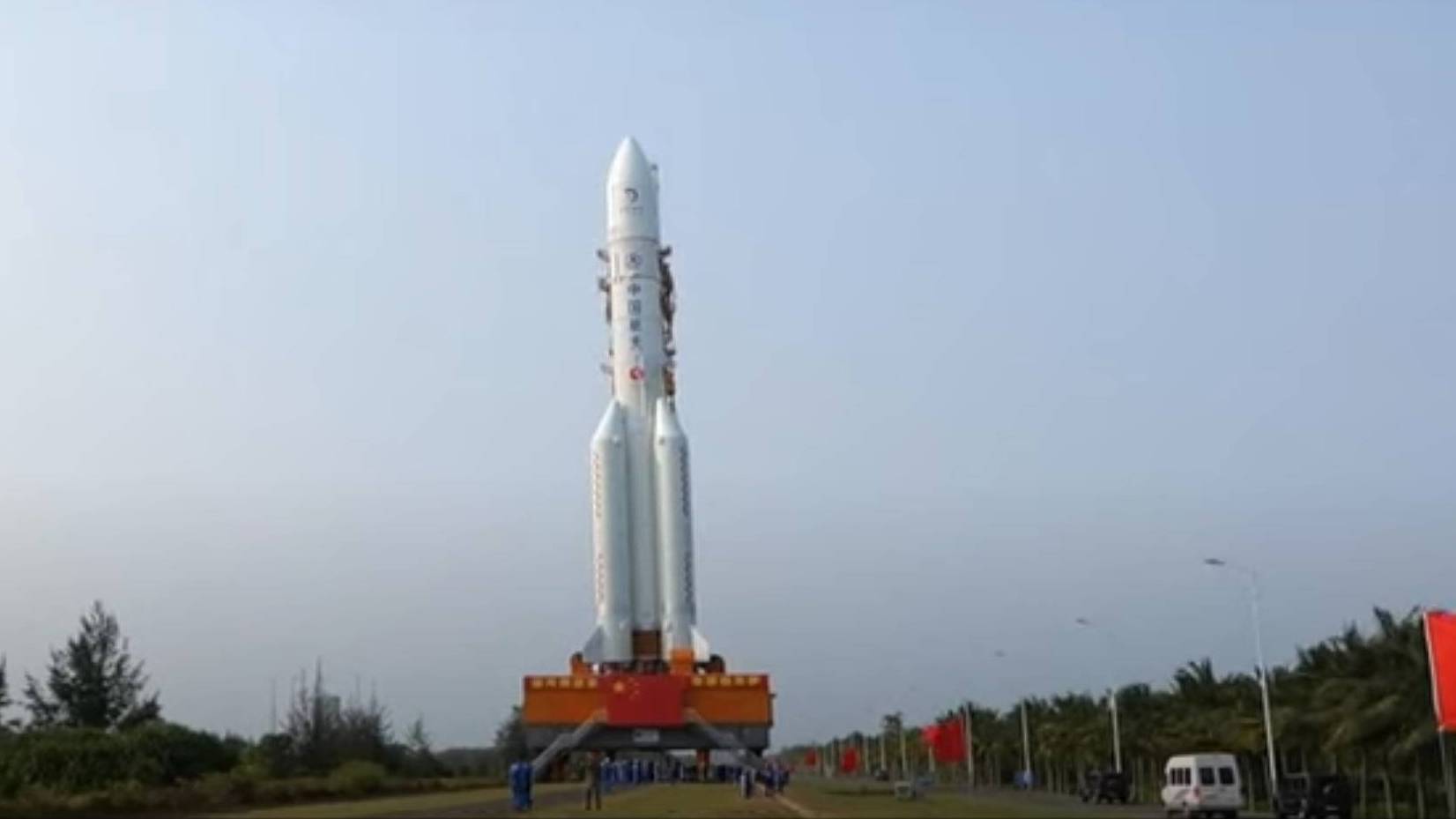(CTN News) – In the coming days, China will launch a robotic spacecraft on a round journey to the moon’s far side, the first of three technically hard missions that would prepare the way for China’s first crewed landing and base near the lunar south pole.
Since the first Chang’e mission in 2007, named after the mythical Chinese moon goddess, China has made significant progress in lunar research, decreasing the technology gap between the United States and Russia.
In 2020, China returned samples from the moon’s near side for the first time in more than four decades, showing that an uncrewed spacecraft could safely return to Earth from the lunar surface.
This week, China is expected to launch Chang’e-6, the backup spacecraft from the 2020 mission, to collect dirt and rocks from the moon’s side that is permanently facing away from Earth.
Chang’e-6’s 53-day mission, which includes a first-ever ascent from the moon’s “hidden” side, relies on a recently deployed relay satellite orbiting the moon due to its lack of direct line of sight to Earth.

The same relay satellite will enable the unmanned Chang’e-7 and 8 missions in 2026 and 2028, respectively, as China begins to explore the south pole for water and establish a primitive base with Russia. China plans to send astronauts to the moon by 2030.
Beijing’s polar intentions have alarmed NASA, whose administrator, Bill Nelson, has frequently warned that China will seize all water resources as its own. Beijing said it remains committed to working with all nations to build a “shared” future.
China will transport payloads from France, Italy, Sweden, and Pakistan on Chang’e-6, while Russia, Switzerland, and Thailand will fly on Chang’e-7.
NASA is prohibited by US law from engaging in any direct or indirect collaboration with China.
Under the separate NASA-led Artemis program, US astronauts will land near the South Pole in 2026, becoming the first people on the moon since 1972.
“International cooperation is key (to lunar exploration),” Clive Neal, a professor of planetary geology at the University of Notre Dame, told Reuters. “It’s simply that China and the United States aren’t collaborating right now. I hope that happens.”
Chang’e 6 will attempt to land on the northeastern side of the huge South Pole-Aitkin Basin, the solar system’s oldest known impact crater.
In February, NASA and Intuitive Machines collaborated to make the southernmost landing.
After landing at Malapert A, a spot near the south pole that was thought to be relatively level, the spacecraft leaned sharply to one side due to a slew of mechanical issues, highlighting the tremendous risk of lunar landings.
Scientists have called the South Pole the “golden belt” of lunar exploration.
Polar ice might support long-term research bases without requiring expensive supplies imported from Earth. India’s Chandrayaan-1 mission, launched on 2008, revealed the presence of ice inside polar craters.
Chang’e-6’s sample return could provide new information about the early evolution of the moon and the inner solar system.
The lack of volcanic activity on the moon’s far side implies that ancient lava flows have not buried more craters, conserving materials from the moon’s early development.
So far, all lunar samples collected by the United States and the former Soviet Union in the 1970s and China in 2020 came from the moon’s near side, where volcanism had been far more active.
After a successful landing, Chang’e-6 will collect approximately 2 kilograms (4.4 pounds) of samples using a mechanical scoop and drill.
“If successful, China’s Chang’e-6 mission would be a watershed moment,” Leonard David, author of “Moon Rush: The New Space Race,” told Reuters. “The robotic reach to the Moon’s far side, and bringing specimens back to Earth, helps fill in the blanks about the still-murky origin of our Moon.”







